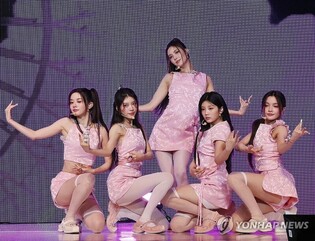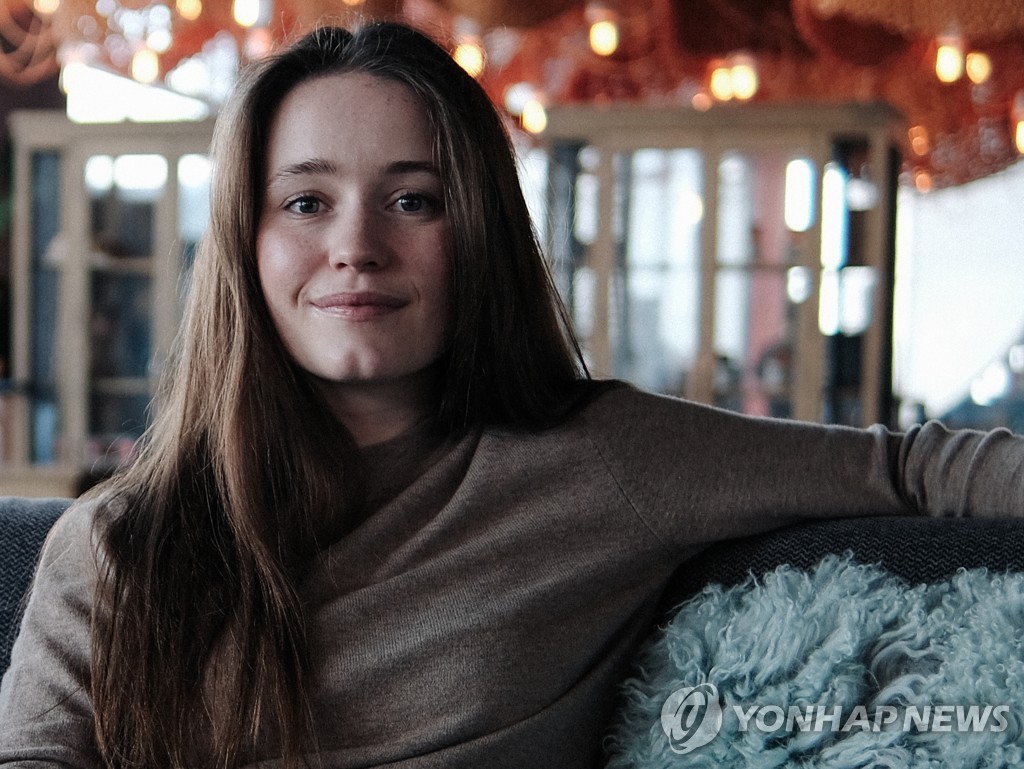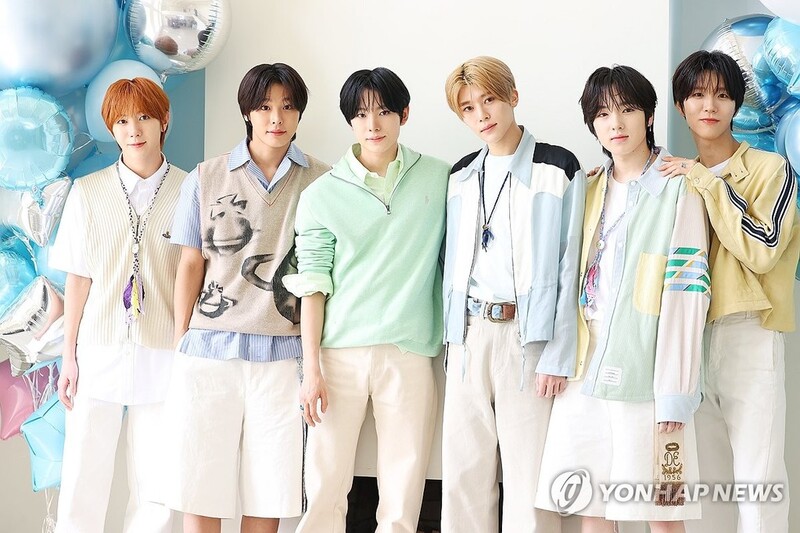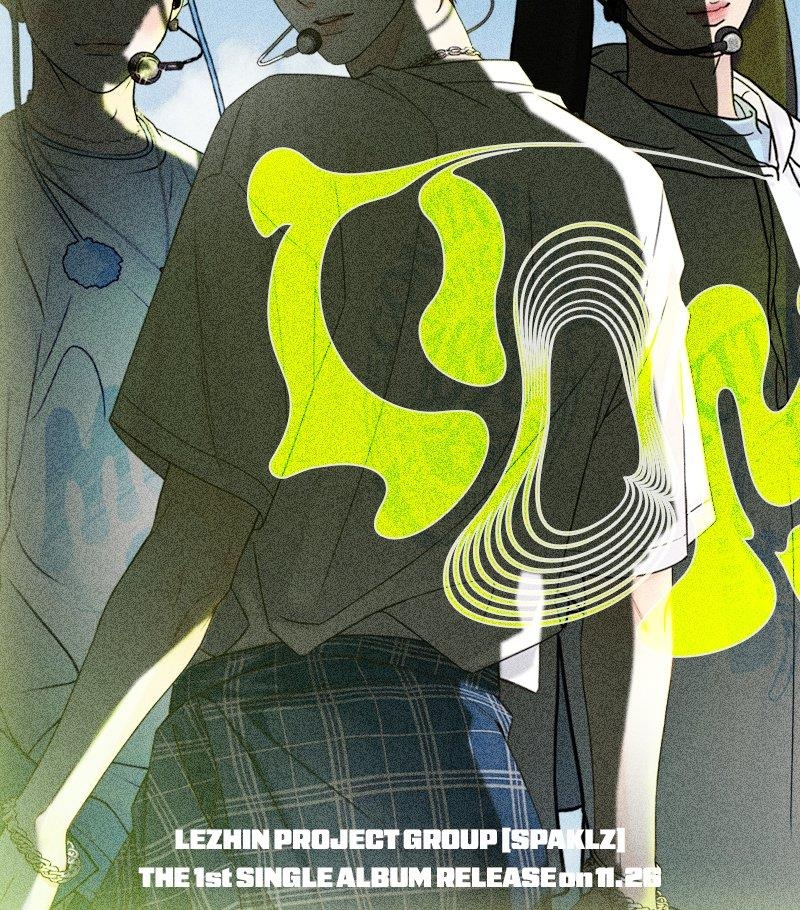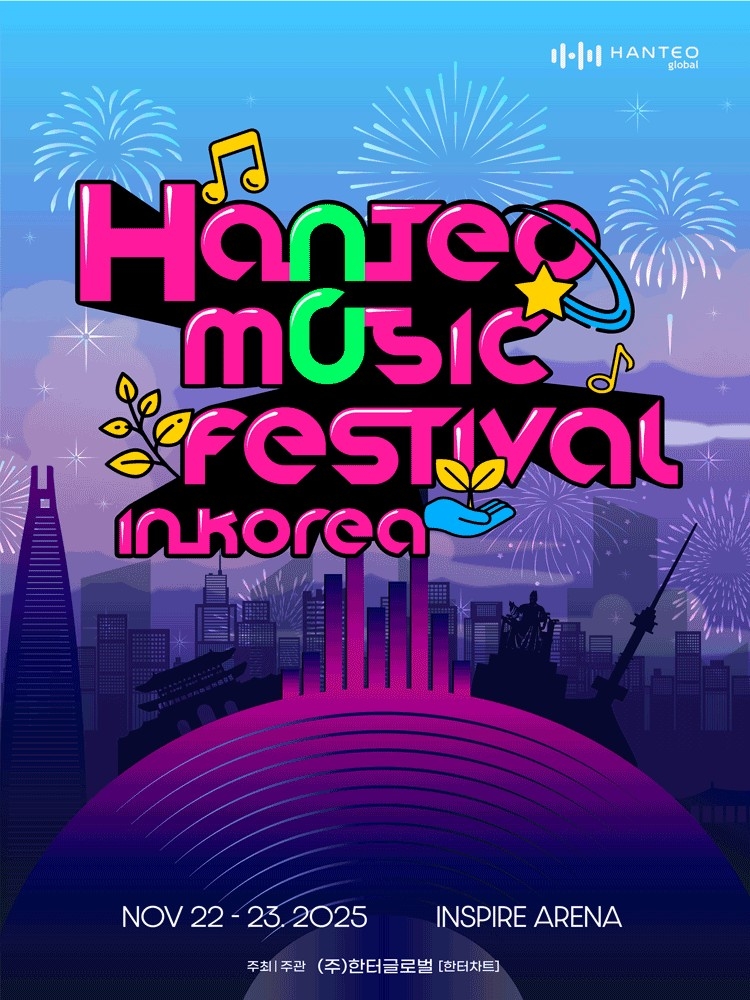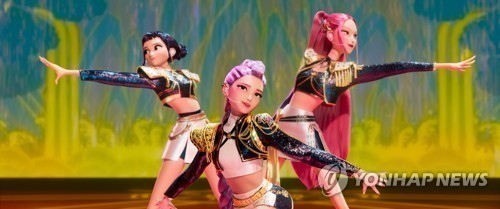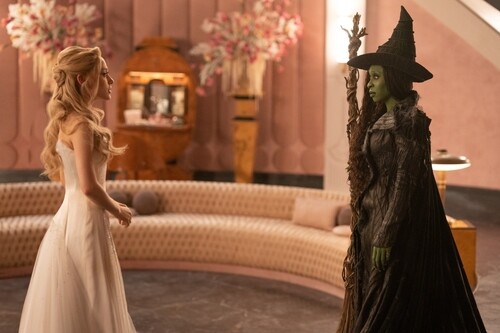*Editor’s note: K-VIBE invites experts from various K-culture sectors to share their extraordinary discovery about the Korean culture.
Chapter 1. The Past
Why Does Santa Claus Drink Coca-Cola?
By Noh Seok-joon (Master K-architect engineer)
 |
God vs. Beloved Leader vs. Santa Claus
Coca-Cola is one of the products representing American capitalism. Coca-Cola advertisements are considered among the most iconic content that effectively stimulates the desires of a capitalist society. Interestingly, if you look at Coca-Cola’s poster advertisements, you will find that their images, compositions, and concepts are strikingly similar to those of communist propaganda posters. Sometimes, you can even find elements that seem to be copied directly.
What elements cause these virtual creations from completely different political and economic systems—communism and capitalism—to be implemented almost identically? In both cases, there is a commonality in creating a virtual world through mythological methods that maximize virtuality and encapsulating this world on a single sheet of paper. This single sheet of paper was meant to persuade people all over the world. Communists used it to promote their ideology and political system, while Coca-Cola used it to make the public absolutely trust and follow the image of their product and company.
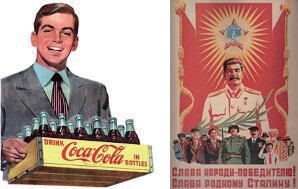
Commonalities Between Propaganda Posters and Coca-Cola Posters
Coca-Cola was developed in 1886 by American pharmacist John Stith Pemberton. Initially created as a digestive aid, Coca-Cola’s syrup was mixed with carbonated water and sold as a drink, gaining popularity through word of mouth. As it became popular, investors were drawn in, and the business expanded with large-scale production facilities and storage for distribution.
Today’s Coca-Cola, a product we consume, is the result of a complex and massive process involving large-scale production facilities, storage, countless employees' labor, and strategic marketing. While a bottle of Coke might seem like a simple product to a consumer, it is backed by a grand and complex capitalist commercial system. Originally invented by a single pharmacist, Coca-Cola now has a mythical corporate story behind The Coca-Cola Company.
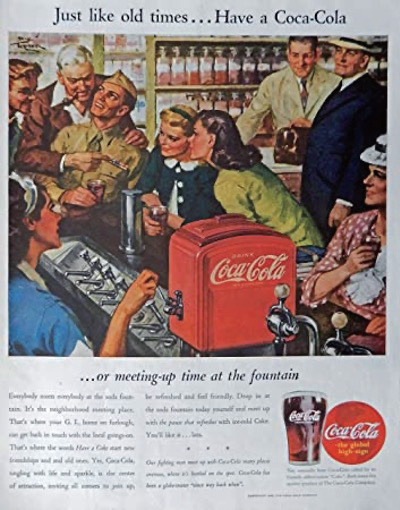
Although Coca-Cola Company must address billions of consumers worldwide, the mission ultimately is to reach each individual’s heart to sell a single Coca-Cola product. To succeed in this mission, it was important to make consumers feel happiness and satisfaction.
Just as propaganda posters created a fictional story on a single sheet of paper to build a communist ideal society, Coca-Cola’s advertising posters also encapsulated the satisfaction and happiness of drinking a Coke into a single poster. This one sheet of paper was meant to reach billions of consumers worldwide, engaging their stories and enticing them to purchase the product.
As previously explained, communism used mythological methods to create propaganda posters to effectively incite and promote ideology and political systems. This method of mythological message delivery was also effectively used by Coca-Cola. Just as communism deified its leaders in propaganda posters, Coca-Cola elevated its product itself to an absolute existence. In Coca-Cola’s advertisements, the fictional character Santa Claus becomes a model, and polar bears drink Coke like humans. This marketing strategy aimed to solve the problem of decreased cola consumption in winter, but it was also a way of conveying a mythological message through a virtual world. Coca-Cola aimed to establish an image of the product as a beverage from an absolute world that transcends reality, enjoyed even by mythical figures like Santa Claus and polar bears.
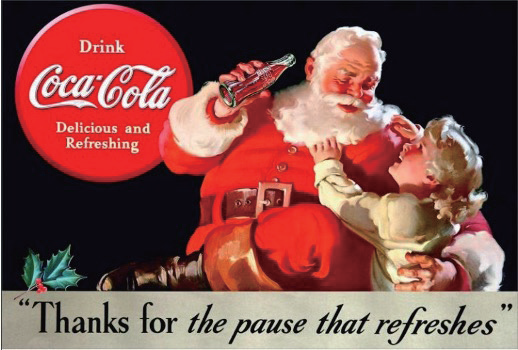
An even more interesting point is that both communist propaganda posters and Coca-Cola advertisements create their own ideal virtual worlds and promise happiness to people within those worlds. While communism promised happiness within the system for the duration of a person’s life, and Coca-Cola promises the happiness of the moment when drinking the product, both share the common goal of making people happy.
In the advertising posters, Santa Claus is depicted in a red cloak, black belt, white hair, and beard, clearly embodying an image similar to Coca-Cola’s brand. He dances happily while drinking a refreshing Coke, as if he is accessing a metaverse of happiness through a single bottle of Coca-Cola.
In this way, despite differing political ideologies, economic systems, and objectives, both communist propaganda posters and capitalist Coca-Cola posters use "happiness," a common human value and desire, as a medium to propose a virtual world to people. Happiness has been the highest value for humanity from ancient times to the present and is also a crucial value for future metaverses. Although we cannot yet know what amazing ways advanced technology and future metaverses will offer us to find happiness, if it is a sincere proposal rather than just a marketing slogan for corporate profit, we might gladly embrace the metaverse.
(C) Yonhap News Agency. All Rights Reserved








